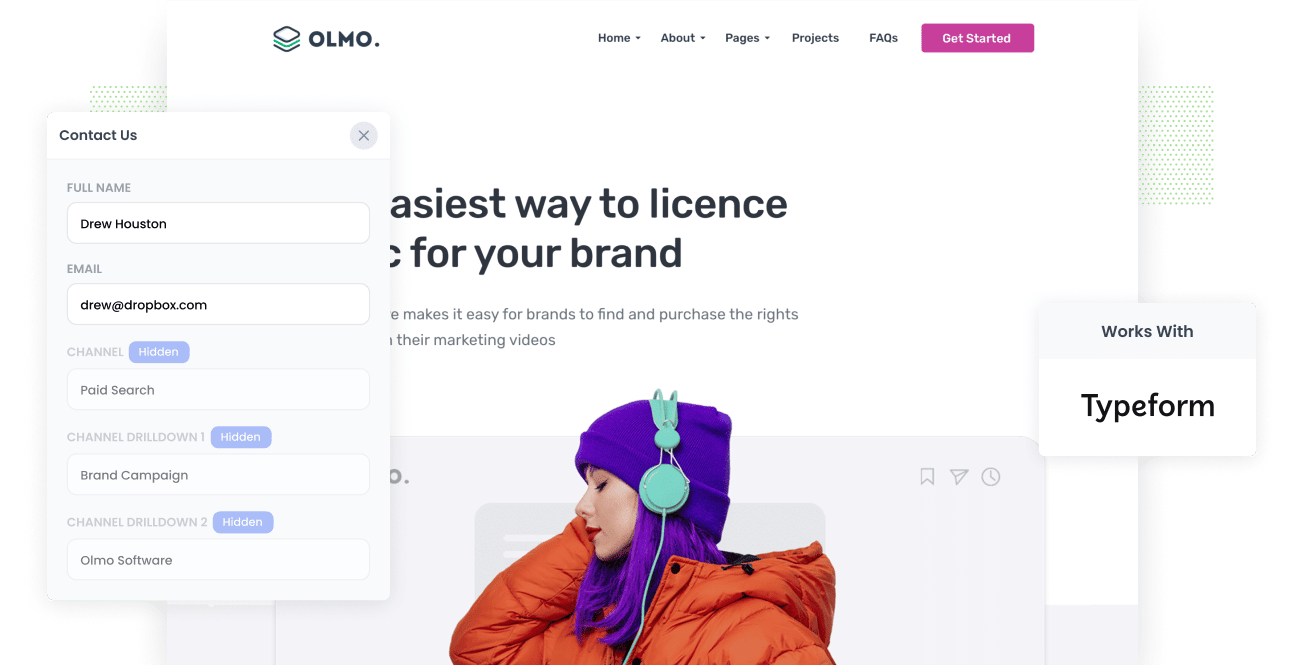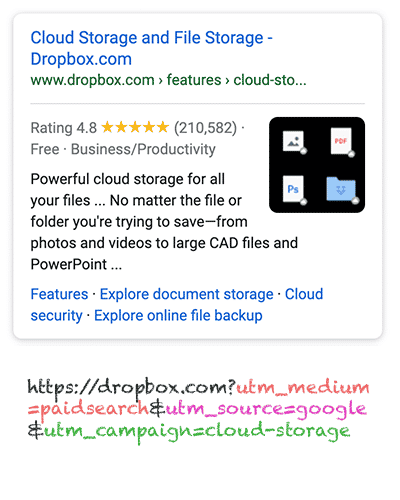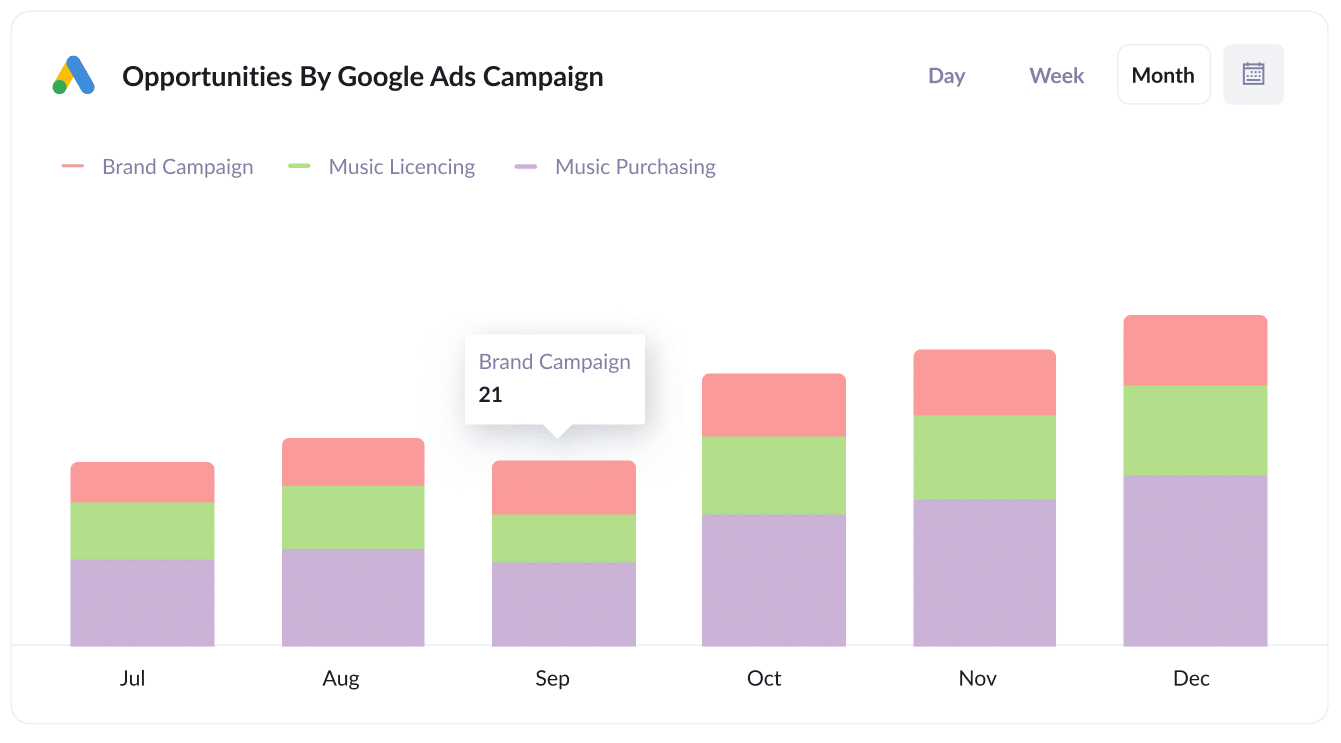4 simple steps to capture Google Ads data in Typeform
Learn how to capture Google Ads data in Typeform, so you can see which campaigns are generating the most leads.

Do you know which of your Google Ads campaigns are actually generating leads?
Tools like Google Analytics make it easy to see how many website visitors you got from each of your campaigns, ad groups, etc. but if you don't know how many leads & customers you got, you can't really determine the ROI.
In this article, we’ll show you how you can use Attributer to capture Google Ads data in Typeform with every lead that comes through, and then ultimately how you can use it to track how each of your Google Ads campaigns are performing.
4 simple steps to capture Google Ads data in Typeform
Attributer makes it easy to capture Google Ads data in Typeform. Here’s how it works:
1. Add UTM parameters to your ads

The first step to tracking leads & customers from Google Ads is to add UTM parameters to all your ads.
If this is the first time you've heard of 'UTM parameters', don't fret. They are basically extra bits of text that you add to the end of the URL you are sending people to from your campaigns that tell analytics tools (like Attributer) where the person has come from.
So if the page you are sending someone to is attributer.io/integrations/typeform then your final URL (with UTM parameters) might look a bit like this:
https://attributer.io/integrations/typeform?utm_medium=paidsearch&utm_source=google&utm_campaign=brand-campaign
Although you put whatever data you want to capture in the UTM's, the general best practice for Google Ads is something like:
- UTM Medium = Paid search
- UTM Source = Google
- UTM Campaign = The name of your Google Ads campaign
- UTM Term = The name of the ad group the ad belongs to
- UTM Content = The specific ad
Tagging your URLs with UTM parameters is easy and there are free tools available on the web which can help you build them.
2. Add hidden fields to your forms

Now that you've added UTM parameters behind your ads, the next step is to add a series of hidden fields to the lead capture forms on your website (I.e. the Contact Us or Request a Quote form on your site).
Here are the hidden fields you need to add to your forms:
- Channel
- Channel Drilldown 1
- Channel Drilldown 2
- Channel Drilldown 3
- Landing Page
- Landing Page Group
Adding hidden fields to Typeform is relatively easy and step-by-step instructions (with screenshots) can be seen here.
3. Attributer writes Google Ads data into the hidden fields

Now that everything is set up, Attributer will track where your visitors are coming from and when they complete a form on your website, it populates the hidden fields with the values you specified in your UTM parameters.
As an example, if I was a marketer at Dropbox and a person came to my website from one of my brand campaigns in paid search, it would populate the hidden fields as follows:
- Channel = Paid search
- Channel Drilldown 1 = Google
- Channel Drildown 2 = Brand campaign
- Channel Drilldown 3 = Free account ad
On top of the values from the UTM parameters, it would also capture the visitor's first landing page (e.g: dropbox.com/features/cloud-storage) and the first landing page group (e.g: features).
4. Google Ads data is captured in Typeform

Finally, when a visitor submits one of the Typeform's on your site, the Google Ads data that was written into the hidden fields by Attributer is captured alongside the lead's name, email, etc.
You can then do a variety of different things with this information, including:
- Add it to each new lead notification email so you’ll be able to instantly see where each lead came from
- Send it to your CRM (including Salesforce, Pipedrive, Dynamics, etc) so your sales team can see where each lead has come from
- Use it to run reports that show you which Google Ads campaigns are actually generating you leads, customers & revenue.
Why using Attributer is the best way to capture Google Ads data in Typeform
Once you've placed UTM parameters behind your Google Ads, there are a few methods for capturing them with each submission of your Typeform forms. So why choose Attributer? Here’s why:
1. Captures all traffic
Attributer doesn't only capture Google Ads data with each Typeform submission, it actually tracks the source of all your leads (including people who have come to your site from other channels, such as Organic Search, Paid Social, Organic Social, etc).
This means that you can see where ALL your leads & customers are coming from, not just those from your Google Ads campaigns.
This is important because, for example, you might find that your SEO efforts are actually generating more leads and customers than your Google Ads campaigns, you'd want to know that so you can change your strategy accordingly.
2. Remembers the data as visitors browse your site
Other methods for capturing the UTM parameters only work if the form is submitted on the same page the visitor originally landed on.
To show you why this is a problem, imagine someone clicks one of your Google Ads and gets taken to your website's homepage. They then click the ‘Get A Quote’ button and are taken to a different page to complete your quote request form. This would mean that the page they complete a form on is not the same page they originally landed on, so the UTM parameters are lost.
Fortunately for you, Attributer doesn't have this limitation. It stores the UTM parameters in a cookie in the user’s browser, meaning that regardless of what page the user completes a form on the UTM parameters you put behind your Google Ads will always be passed through.
This ultimately gives you more accurate reporting on how many leads & customers you get from your Google Ads.
3. Provides cleaner data
Other methods for capturing UTM parameters simply capture the raw data as it is.
This can be a problem if you've ha multiple agencies or people managing your Google Ads over time, as they've likely used different UTM parameters at different stages,
As an example, imagine some of your Google Ads campaigns are tagged with UTM_Source= Google.com (capital G), others with UTM_Source= google (lowercase, no domain), and others with UTM_Source= adwords.
If you were to capture these raw UTM parameters in Typeform, send them to your CRM, and try to run a report to see how many leads your Google Ads campaigns have brought you, you'll get three different sources that you would have to manually stitch together.
With Attributer, you don't have to deal with this because it takes the possibility of capitalization and other inconsistencies into account, and would ascribe leads to the Paid Search channel regardless.
4. Captures landing page data as well
Attributer not only captures information on how visitors arrived at your website (such as the fact they came from your Google Ads campaigns), but it also captures the landing page (I.e. attributer.io/blog/capture-utm-parameters) and the landing page category (I.e. /blog).
This means that you can see how many leads & customers you are getting from the content you created (like your blog for instance)
And because it captures both the landing page and the landing page group, you can look at how your blog is performing as a whole as well as what individual blog posts are driving the most leads, customers and revenue.
3 example reports you can run when you capture Google Ads data in Typeform with Attributer
When you capture Google Ads data in Typeform using Attributer, you can then send it to your CRM and run a variety of reports to understand which channels and campaigns are generating the most leads, customers, revenue, etc.
Below are some of our favourite reports to run to understand what's driving growth for your business:
1. Leads by Channel

Because Attributer capture the source of ALL your leads (not just those from Google Ads), you can run reports like the one above which shows the number of leads you get each month broken down by the channel they came from.
This report can help you give you a high-level view of which of those channels are performing best and where you should be investing your marketing budget and resources.
2. Opportunities by Google Ads campaign

If you're running Google Ads, you've probably got a variety of different campaigns going at once.
If so, the above chart (which shows how many opportunities have been generated each month broken down by the Google Ads campaign they came from) can help you understand which campaigns are actually generating sales opportunities for your business.
3. Customers by Keyword

If you put the keyword in the UTM parameters behind your Google Ads (which is easy to do using tracking templates), then you can capture the exact keywords your customers are using to find your business.
This can help you to understand which keywords are generating you the most customers, and you can then go and bid higher on those terms to help grow your business.
Wrap up
If you've been struggling to see how many leads & customers you are getting from your Google Ads (and ultimately what the ROI is), then Attributer can help.
It will capture the UTM parameters you use behind your Google Ad campaigns which will allow you to see the exact campaign, ad group, keyword, etc that each lead came from.
Best of all, it's free to get started, so start your 14-day free trial today.
Get Started For Free
Start your 14-day free trial of Attributer today!

About the Author
Aaron Beashel is the founder of Attributer and has over 15 years of experience in marketing & analytics. He is a recognized expert in the subject and has written articles for leading websites such as Hubspot, Zapier, Search Engine Journal, Buffer, Unbounce & more. Learn more about Aaron here.
